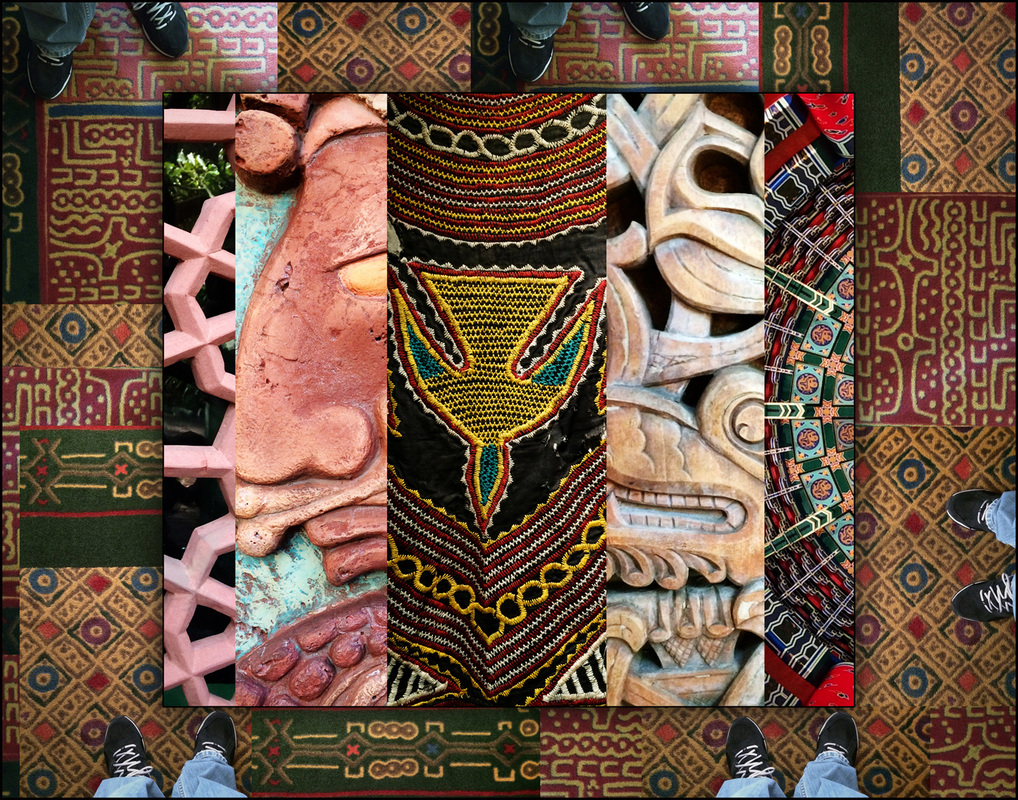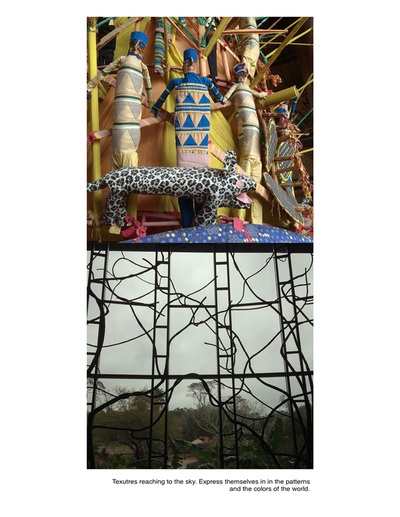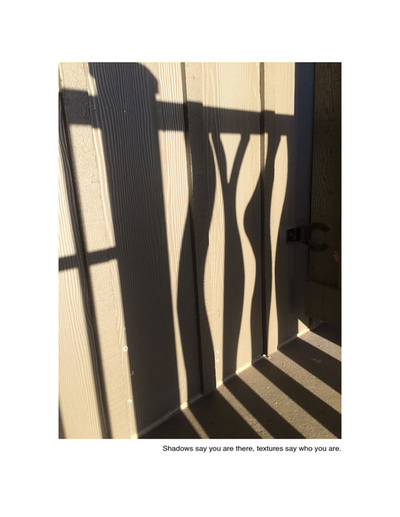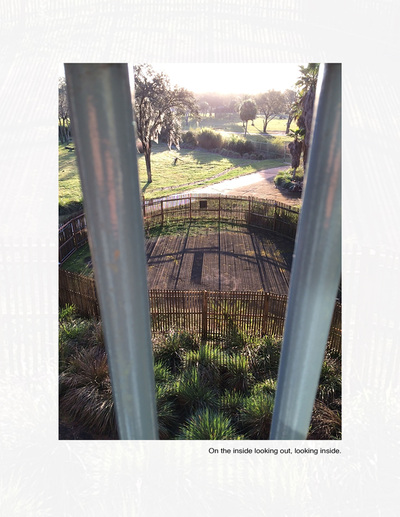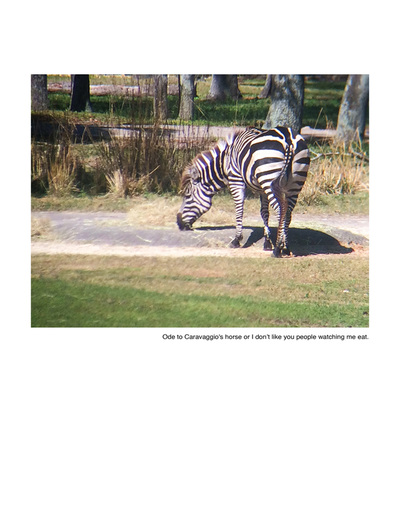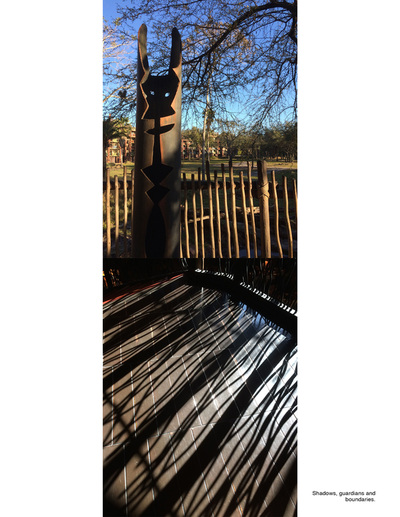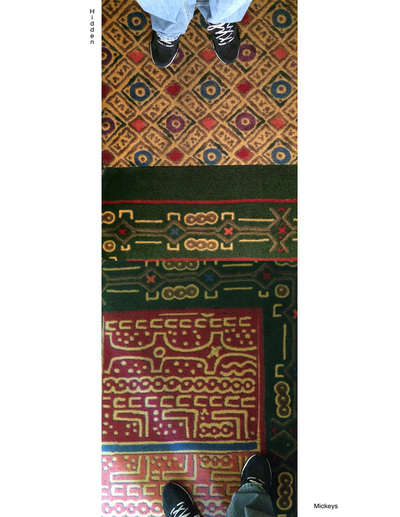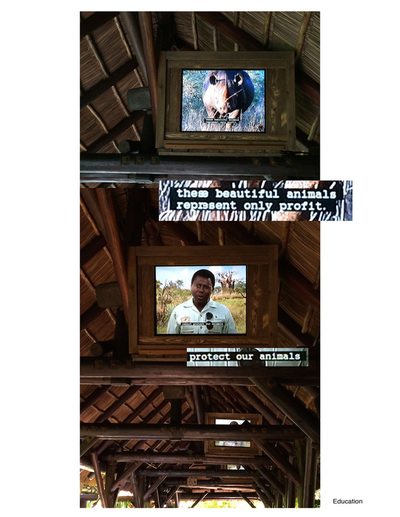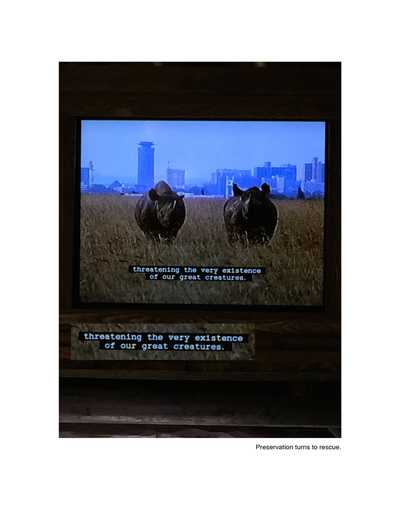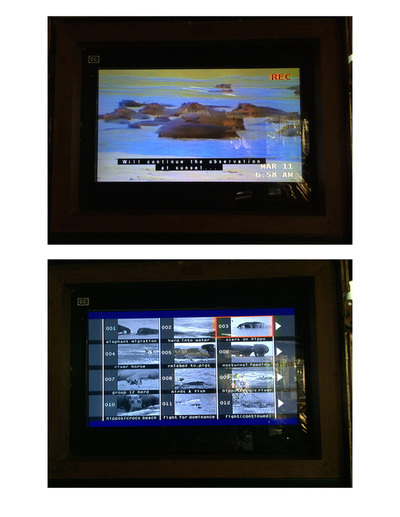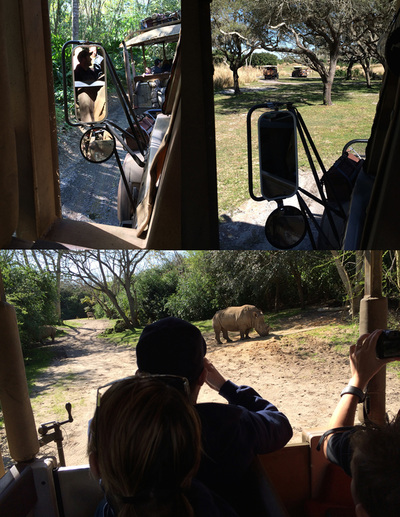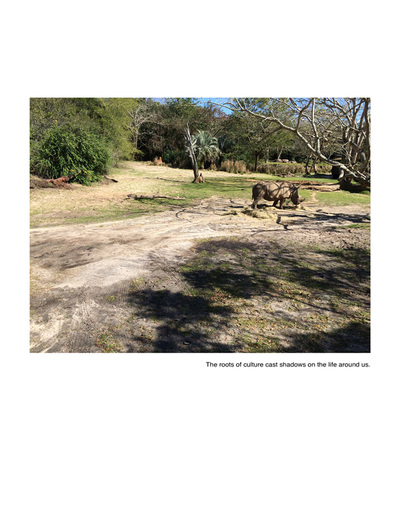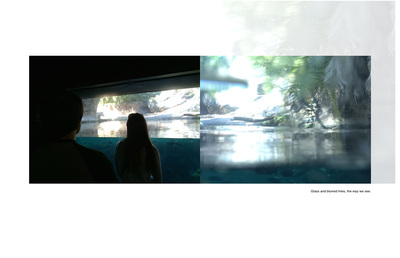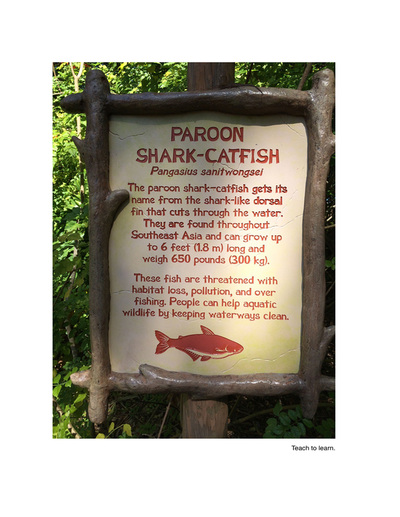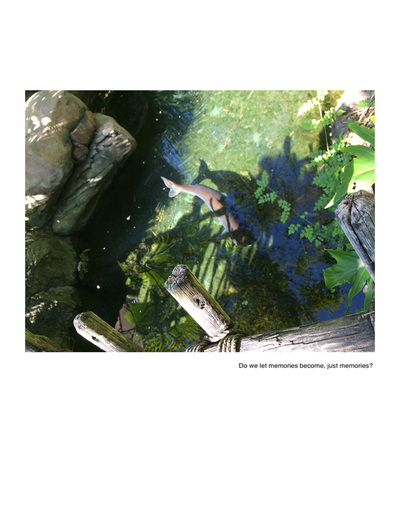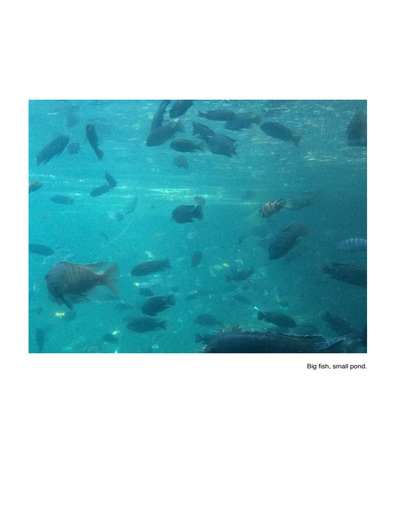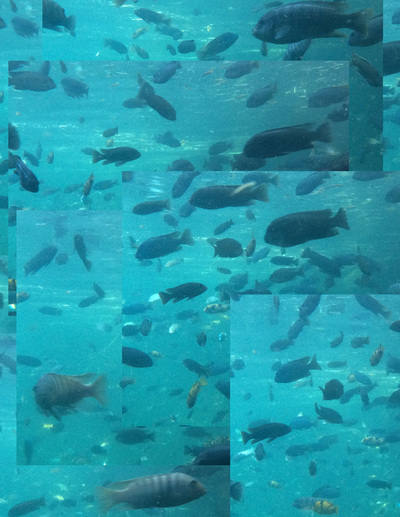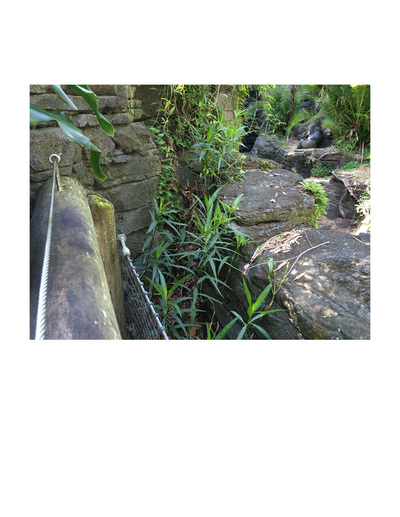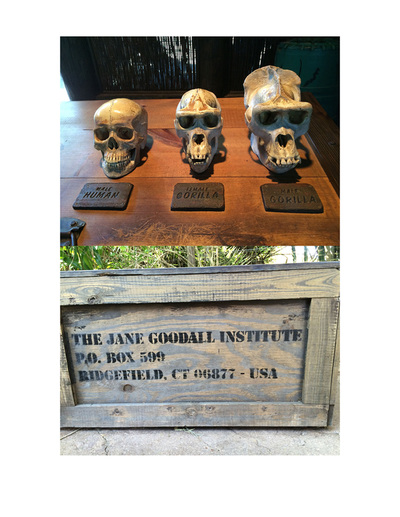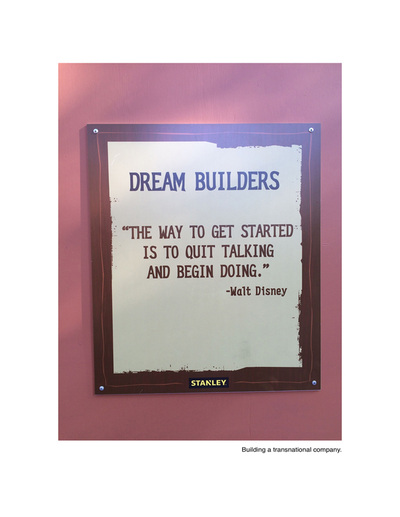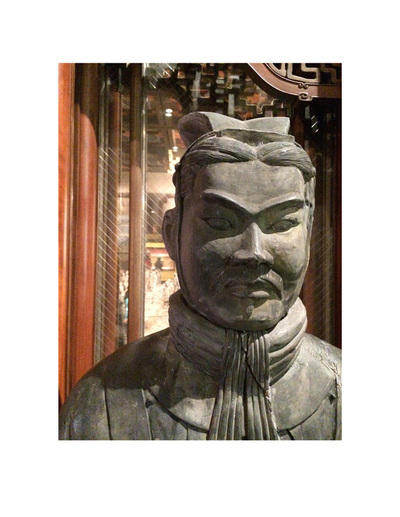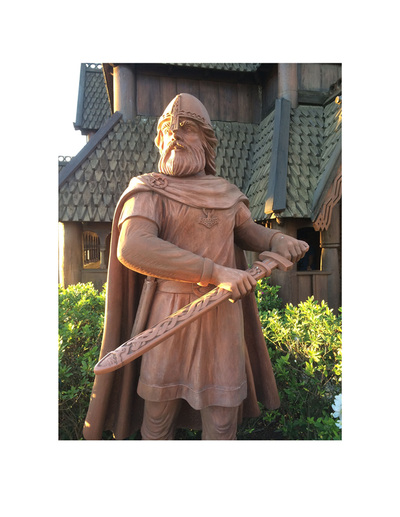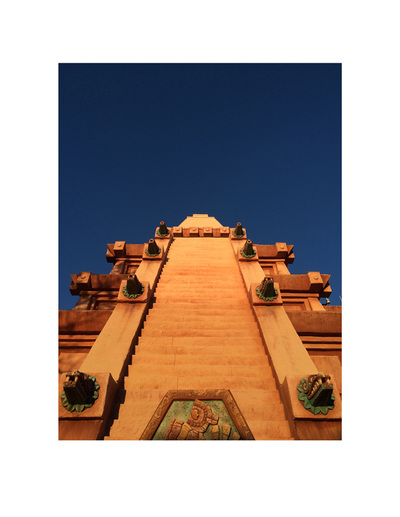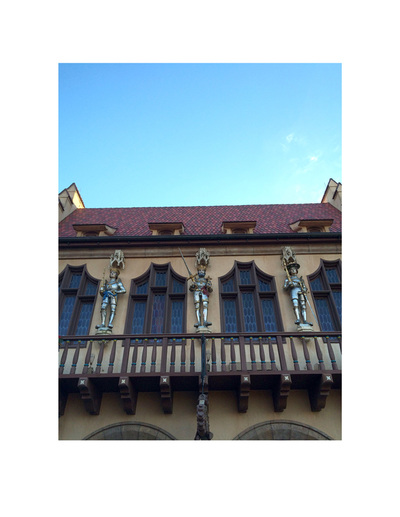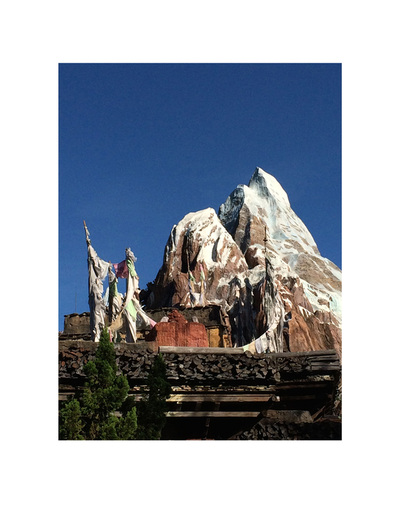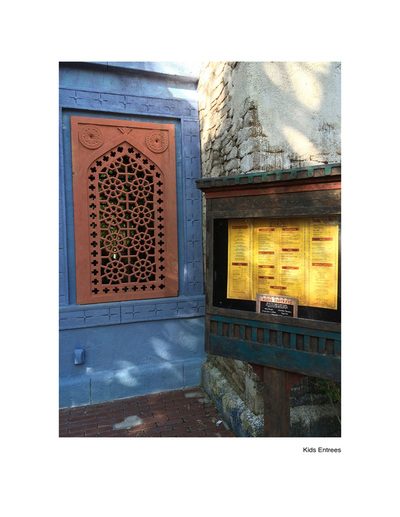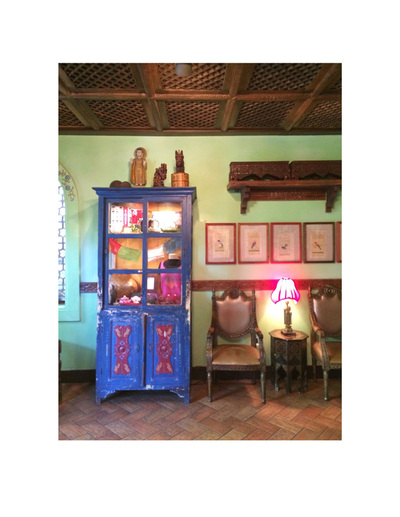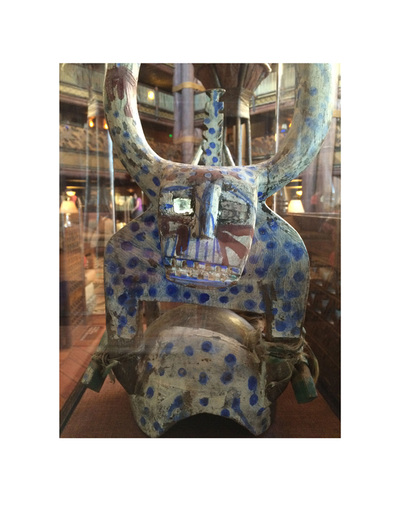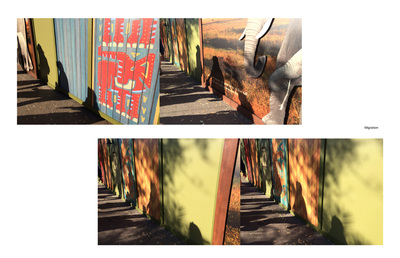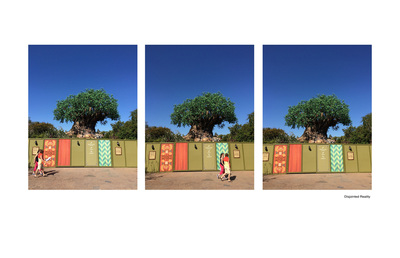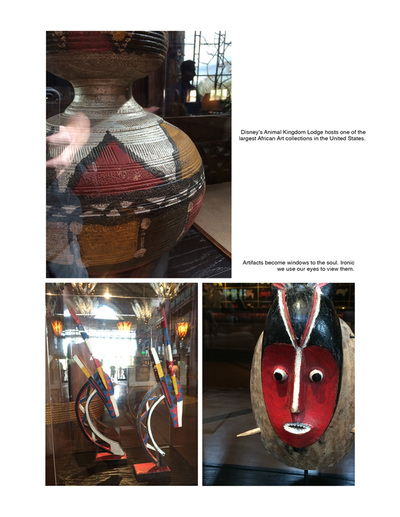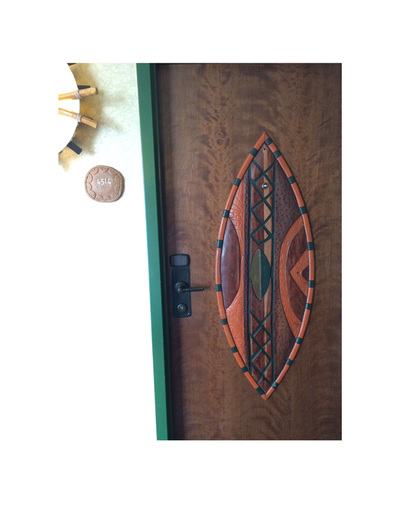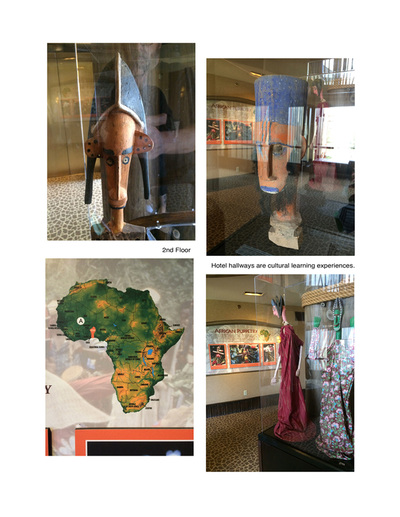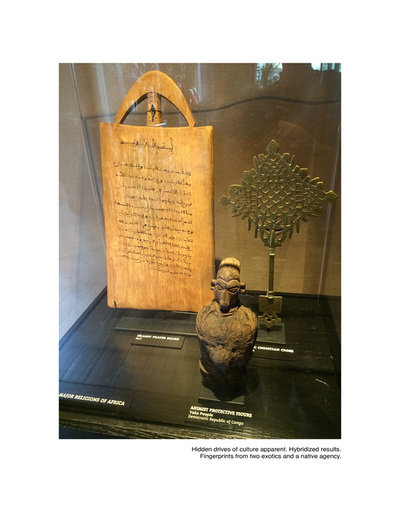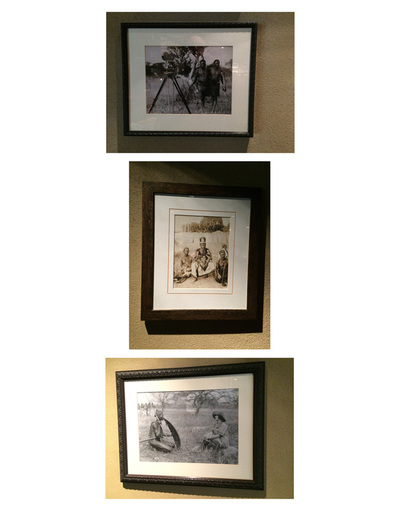Globalization and me.
These images are glimpses. Interpretations of an experience. They are meant to lead, however, allow the viewer to make their own assumptions and conduct their own pondering as for deeper significance. There are codes, messages and visual clues as to understanding the content. It is after all an exploration and although we go this journey together, we each have our own experience.
Click on the gallery images below:
You can also view the images on my Flickr site.
Robert Scott Hughes
Globalization and Me
February 22, 2015
The Unsuspecting Tourist
When my son Daniel told me I would be accompanying him to Disney’s Animal
Kingdom Resort, I was excited and unsure about what this experience would hold. For me, the
last time I visited Disney was in 1998 at The Magic Kingdom when Daniel was two years old. I
remember a stroller and lots of people, lots and lots of people.
What would I experience on this trip? What would be my focus? Reflectively the
experience was nothing short of amazing and I feel I gained insight as to the dynamics that drive
Disney’s influence on our “glocal” and broader cultures. I will take some time to filtrate the
experience and some of the things I learned along the way.
For one, I better understand the impact of Disney regarding foreign exchange issues,
immigration and tourism, including work visas and international employment. As well, my
discoveries led me to how essential multicultural employees; art and art history are to Disney’s
“authentic” atmosphere. I will discuss specifically my experiences surrounding Epcot, The
Animal Kingdom Park and Resort and the distinctive attributes of the Disneyfication process.
However, most of all, my research led me to the invaluable facet of my Disney
experience, that of the people I observed and met while visiting there. Their stories and behavior
were intriguing and brought the true authentic experience to light.
Heigh-Ho, Heigh-Ho, What we know
At the New York World’s Fair in 1963, Walt Disney’s “It’s a Small World offered a
vision that would not characterize the thinking of mainstream America for another quarter
century,” (Brode, 2005, p. 1). Today, Disney’s desire of bringing a multicultural experience to
park goers is especially true when looking at the employees of Epcot and The Animal Kingdom
Park and Resorts (Johnson, 2011, p. 919). Disney lawyers went to great lengths to ensure the
employees at Epcot and The Animal Kingdom Lodge were from the home countries their
pavilions, parks and resorts represent. The Disney legal team spearheaded the federal law
instituting Q Visas during the late 1980’s as mounting pressure came from the U.S. General
Accounting Office regarding abuses of more student oriented J Visas Disney employees were
operating under at that time (p. 922).
In conjunction with three key congressmen, Disney’s legal council ensured the Q visa
would be narrowly written to service the park’s needs (p. 923). The passing of the Q visa made it
possible for the park to hire workers from all over the globe as long as those employees shared
their “history, culture, and traditions of the country of the alien’s nationality,” (p. 924).
Employees under the Q Visa can work in the United States for up to 15 months without taking up
residency as long as they return to their home country for one year before reapplying (p. 926).
There is also no limit for how many Q Visas can be granted.
Disney’s authorship and promotion of the Q Visa is not without criticism. The Q Visa
exempts Disney from paying FICA withholdings, allows employee wages to be slightly above
minimum wage, although workers are included in collective bargaining union representation. It
is understood that employees spend money renting the Disney owned apartment complexes for
international employees and many spend money at the parks during their work and leisure time
(p. 931). In all of this Disney saves an enormous amount of cash and retrieves some of it from
the employees themselves.
With Magic, Comes Mystery, What is Still Unknown?
Ironically, some employees I spoke with indicated they had lived in the Orlando area for
quite some time, around 5-10 years on average. Their backgrounds were from India, the Middle
East and Africa, respectively. This has me wondering if some employees who work along the
lines of the Q Visa don’t also work towards residency and citizenship long term.
One afternoon, as I clumsily walked through the hallways carrying a few souvenir drums,
a cleaning service employee told me her story of buying an authentic Djembe when she visited
home in Senegal, Africa. She moved to Orlando 10 years ago with her husband who has since
passed away. She raises their son, now a teenager, by herself.
There was yet another who shared being originally from India, her family settled in
Africa, then London. She met her husband in the U.K. and they later relocated to Orlando. Her
husband works at Disney too. She indicated having lived here for “many” years. As well, a
waiter similarly said he has lived in Orlando for the last 7 years. He was of Eastern descent.
Generally, the influx of multinational influence is apparent throughout the Animal
Kingdom Lodge, from the food, décor and the people. Surely employment with Disney operating
under visas and exchange programs link to migration and relocation patterns globally. I found no
concrete academic research on this. It begs the question if working at Disney is a way for
international people groups to gain United States citizenship if they so choose.
A World of Paradox
Disney notes the Animal Kingdom Lodge has one of the largest African Art collections in
the United States (Disney, 2015). The earth tones and rustic folk feel of the furnishings at the
lodge are a stark contrast to the more streamlined modern feel of Epcot. In fact, my first
impression was that Epcot appeared to be a hugely glorified open-air mall. There were so many
people, alcohol in hand, meandering around the streets, watching performances and shopping.
The hustle and bustle was unordinary and seemed out of place in light of the authentic styling of
the international pavilions. However, it also occurred to me, everyone, myself included,
represented a collective microcosm of the globalism concept. This included our physical
variations and cultural backgrounds. For instance, it was not uncommon to hear two or three
different languages while walking a few meters, yet we were all there enjoying this common
multicultural experience. My observations branched beyond a focus on employees and the park’s
attractions. I saw commonality and difference all around me.
For Epcot, the juxtaposition of a pop culture swirling about in an exotic, yet fabricated
reality was a clear Disneyfication of original cultural contexts. Ultra clean environments, people,
lots of people, and a festive faire lent it all to be “Disneyfied.” However, the more so one studies
hybridization, the hybridized environment tends to become “the reality” all on its own, similar to
a Cosplay costume mash up.
On one occasion the hodgepodge experience surfaced at the Japanese restaurant, Tokyo
Dining. The afternoon blue light of the sky and lake visible, tables filled with touristy college
students, families and older couples enjoying their conversation and food. Waitresses wearing
traditional regalia would bow consistently while serving me fresh sushi and hot tea. Across the
dining area a woman with a Betty Paige hairstyle, wearing polka dotted Minnie Mouse ears, took
a selfie on her phone, green martini in hand. It was surreal and I think could have made Salvador
Dali somewhat inspired.
This was only a snapshot of my four-day travels. The stimulus was a bit overwhelming at
times and a far cry from the authentic experiences of Bode in helping the Secoya Amazonian
tribe, their village only accessible by canoe (2011), or experiencing traditional kite festivals in
Weifang, China (Wang, 2011). However, the authenticity subtly seeped in at times mostly from
interactions with the people around me. I was elated when told “Arigato” and I replied the same
to the lady selling me a water bottle at the Japanese Pavilion. She paused and looked up with a
bit of a surprise.
In all when I travel, I think I’ll better see the Disneyfication that is changing our culture
locally and abroad. As cities strive to promote cultural development and city planning sometimes
circulates around art and socialization, much of the authentic nature of the environment gets
wiped away. With Disneyfication, we remodel our environments, “stripping them of their
original character so that they are repackaged in a sanitized, simplified, and sentimentalized
form,” (Walker Art Center, 2015). This hybridization can leave one scratching their head and
pondering “What a Wonderful World” of Disney is this? More importantly, is it real after all?
References
Bode, P. (2009). The circulatory system of oil contamination, visual culture, and Amazon
indigenous life. In E. M. Delacruz, A. Arnold, M. Parsons, and A. Kuo, (Eds.),
Globalization, art, and education (pp. 269-277). Reston, VA: National Art Education
Association.
Brode, D. (2005). I had a dream is a wish your heart makes, in defense of Disney, part 1. In
Multiculturalism and the Mouse: Race and sex in Disney entertainment (p. 1). Austin:
University of Texas Press.
Johnson, K. (2011, May 13). The wonderful world of Disney visas. Retrieved from
http://papers.ssrn.com/sol3/papers.cfm?abstract_id=1839544
Walker Art Center. (n.d.). Worlds away: New suburban landscapes. Retrieved from
http://design.walkerart.org/worldsaway/Terms/Disneyfication
Wang, W. (2009). Sculpting the sky: The art and culture of Weifang International Kite Festival.
In E. M. Delacruz, A. Arnold, M. Parsons, and A. Kuo, (Eds.), Globalization, art, and
education (pp. 41-46). Reston, VA: National Art Education Association.
Globalization and Me
February 22, 2015
The Unsuspecting Tourist
When my son Daniel told me I would be accompanying him to Disney’s Animal
Kingdom Resort, I was excited and unsure about what this experience would hold. For me, the
last time I visited Disney was in 1998 at The Magic Kingdom when Daniel was two years old. I
remember a stroller and lots of people, lots and lots of people.
What would I experience on this trip? What would be my focus? Reflectively the
experience was nothing short of amazing and I feel I gained insight as to the dynamics that drive
Disney’s influence on our “glocal” and broader cultures. I will take some time to filtrate the
experience and some of the things I learned along the way.
For one, I better understand the impact of Disney regarding foreign exchange issues,
immigration and tourism, including work visas and international employment. As well, my
discoveries led me to how essential multicultural employees; art and art history are to Disney’s
“authentic” atmosphere. I will discuss specifically my experiences surrounding Epcot, The
Animal Kingdom Park and Resort and the distinctive attributes of the Disneyfication process.
However, most of all, my research led me to the invaluable facet of my Disney
experience, that of the people I observed and met while visiting there. Their stories and behavior
were intriguing and brought the true authentic experience to light.
Heigh-Ho, Heigh-Ho, What we know
At the New York World’s Fair in 1963, Walt Disney’s “It’s a Small World offered a
vision that would not characterize the thinking of mainstream America for another quarter
century,” (Brode, 2005, p. 1). Today, Disney’s desire of bringing a multicultural experience to
park goers is especially true when looking at the employees of Epcot and The Animal Kingdom
Park and Resorts (Johnson, 2011, p. 919). Disney lawyers went to great lengths to ensure the
employees at Epcot and The Animal Kingdom Lodge were from the home countries their
pavilions, parks and resorts represent. The Disney legal team spearheaded the federal law
instituting Q Visas during the late 1980’s as mounting pressure came from the U.S. General
Accounting Office regarding abuses of more student oriented J Visas Disney employees were
operating under at that time (p. 922).
In conjunction with three key congressmen, Disney’s legal council ensured the Q visa
would be narrowly written to service the park’s needs (p. 923). The passing of the Q visa made it
possible for the park to hire workers from all over the globe as long as those employees shared
their “history, culture, and traditions of the country of the alien’s nationality,” (p. 924).
Employees under the Q Visa can work in the United States for up to 15 months without taking up
residency as long as they return to their home country for one year before reapplying (p. 926).
There is also no limit for how many Q Visas can be granted.
Disney’s authorship and promotion of the Q Visa is not without criticism. The Q Visa
exempts Disney from paying FICA withholdings, allows employee wages to be slightly above
minimum wage, although workers are included in collective bargaining union representation. It
is understood that employees spend money renting the Disney owned apartment complexes for
international employees and many spend money at the parks during their work and leisure time
(p. 931). In all of this Disney saves an enormous amount of cash and retrieves some of it from
the employees themselves.
With Magic, Comes Mystery, What is Still Unknown?
Ironically, some employees I spoke with indicated they had lived in the Orlando area for
quite some time, around 5-10 years on average. Their backgrounds were from India, the Middle
East and Africa, respectively. This has me wondering if some employees who work along the
lines of the Q Visa don’t also work towards residency and citizenship long term.
One afternoon, as I clumsily walked through the hallways carrying a few souvenir drums,
a cleaning service employee told me her story of buying an authentic Djembe when she visited
home in Senegal, Africa. She moved to Orlando 10 years ago with her husband who has since
passed away. She raises their son, now a teenager, by herself.
There was yet another who shared being originally from India, her family settled in
Africa, then London. She met her husband in the U.K. and they later relocated to Orlando. Her
husband works at Disney too. She indicated having lived here for “many” years. As well, a
waiter similarly said he has lived in Orlando for the last 7 years. He was of Eastern descent.
Generally, the influx of multinational influence is apparent throughout the Animal
Kingdom Lodge, from the food, décor and the people. Surely employment with Disney operating
under visas and exchange programs link to migration and relocation patterns globally. I found no
concrete academic research on this. It begs the question if working at Disney is a way for
international people groups to gain United States citizenship if they so choose.
A World of Paradox
Disney notes the Animal Kingdom Lodge has one of the largest African Art collections in
the United States (Disney, 2015). The earth tones and rustic folk feel of the furnishings at the
lodge are a stark contrast to the more streamlined modern feel of Epcot. In fact, my first
impression was that Epcot appeared to be a hugely glorified open-air mall. There were so many
people, alcohol in hand, meandering around the streets, watching performances and shopping.
The hustle and bustle was unordinary and seemed out of place in light of the authentic styling of
the international pavilions. However, it also occurred to me, everyone, myself included,
represented a collective microcosm of the globalism concept. This included our physical
variations and cultural backgrounds. For instance, it was not uncommon to hear two or three
different languages while walking a few meters, yet we were all there enjoying this common
multicultural experience. My observations branched beyond a focus on employees and the park’s
attractions. I saw commonality and difference all around me.
For Epcot, the juxtaposition of a pop culture swirling about in an exotic, yet fabricated
reality was a clear Disneyfication of original cultural contexts. Ultra clean environments, people,
lots of people, and a festive faire lent it all to be “Disneyfied.” However, the more so one studies
hybridization, the hybridized environment tends to become “the reality” all on its own, similar to
a Cosplay costume mash up.
On one occasion the hodgepodge experience surfaced at the Japanese restaurant, Tokyo
Dining. The afternoon blue light of the sky and lake visible, tables filled with touristy college
students, families and older couples enjoying their conversation and food. Waitresses wearing
traditional regalia would bow consistently while serving me fresh sushi and hot tea. Across the
dining area a woman with a Betty Paige hairstyle, wearing polka dotted Minnie Mouse ears, took
a selfie on her phone, green martini in hand. It was surreal and I think could have made Salvador
Dali somewhat inspired.
This was only a snapshot of my four-day travels. The stimulus was a bit overwhelming at
times and a far cry from the authentic experiences of Bode in helping the Secoya Amazonian
tribe, their village only accessible by canoe (2011), or experiencing traditional kite festivals in
Weifang, China (Wang, 2011). However, the authenticity subtly seeped in at times mostly from
interactions with the people around me. I was elated when told “Arigato” and I replied the same
to the lady selling me a water bottle at the Japanese Pavilion. She paused and looked up with a
bit of a surprise.
In all when I travel, I think I’ll better see the Disneyfication that is changing our culture
locally and abroad. As cities strive to promote cultural development and city planning sometimes
circulates around art and socialization, much of the authentic nature of the environment gets
wiped away. With Disneyfication, we remodel our environments, “stripping them of their
original character so that they are repackaged in a sanitized, simplified, and sentimentalized
form,” (Walker Art Center, 2015). This hybridization can leave one scratching their head and
pondering “What a Wonderful World” of Disney is this? More importantly, is it real after all?
References
Bode, P. (2009). The circulatory system of oil contamination, visual culture, and Amazon
indigenous life. In E. M. Delacruz, A. Arnold, M. Parsons, and A. Kuo, (Eds.),
Globalization, art, and education (pp. 269-277). Reston, VA: National Art Education
Association.
Brode, D. (2005). I had a dream is a wish your heart makes, in defense of Disney, part 1. In
Multiculturalism and the Mouse: Race and sex in Disney entertainment (p. 1). Austin:
University of Texas Press.
Johnson, K. (2011, May 13). The wonderful world of Disney visas. Retrieved from
http://papers.ssrn.com/sol3/papers.cfm?abstract_id=1839544
Walker Art Center. (n.d.). Worlds away: New suburban landscapes. Retrieved from
http://design.walkerart.org/worldsaway/Terms/Disneyfication
Wang, W. (2009). Sculpting the sky: The art and culture of Weifang International Kite Festival.
In E. M. Delacruz, A. Arnold, M. Parsons, and A. Kuo, (Eds.), Globalization, art, and
education (pp. 41-46). Reston, VA: National Art Education Association.
| hughes_globalresearch.docx | |
| File Size: | 105 kb |
| File Type: | docx |
